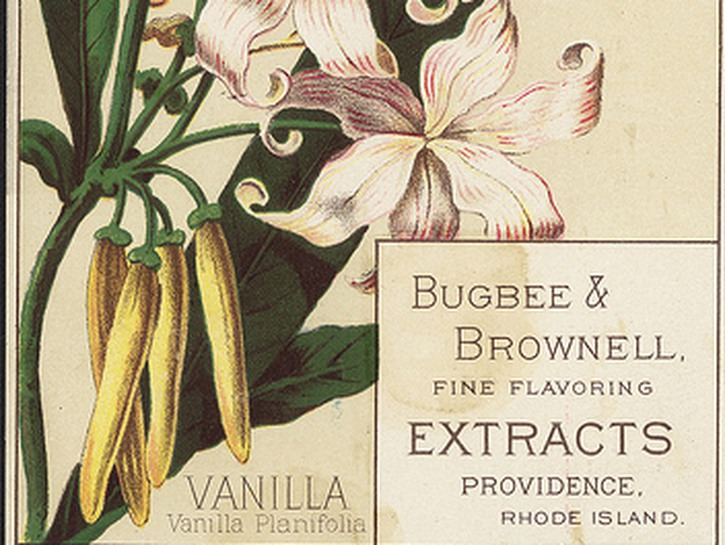As the weather cools, the need to bake heats up. After gathering all your ingredients, sifting your flour, and convincing the kids to help out, the last thing you want to do is stop everything and run to the store because you are missing vanilla extract. It’s easy to forget this key ingredient, since it has a long shelf life and you probably don’t buy it often.
But have no fear, super bakers! You probably have a couple of items on hand that you could substitute for vanilla extract. There’s no need to turn off your preheated oven, rip off your apron, and head to the store while all of the good smells in your kitchen dissipate.
1. Maple Syrup

Substitute one teaspoon of maple syrup for one teaspoon of vanilla extract.
This viscous, sticky sweetener doesn’t seem like it would be an appropriate substitute for vanilla. Sure, both syrup and vanilla are dark liquids, but they have very different properties and uses. Syrup is generally used on its own, while vanilla is always used in a recipe. Syrup can be used in abundance, while vanilla is used sparingly. Despite these differences, maple syrup is a great substitute for vanilla. Your dish won’t taste any different.
2. Almond Extract

Substitute one-half of a teaspoon of almond extract for one teaspoon of vanilla extract.
If you bake quite a bit, chances are you have a some almond extract in the cupboard. Both almond extract and vanilla extract are nutty and aromatic, so almond extract makes a great substitute for vanilla. However, almond extract has a significantly stronger taste, because the nutty flavor is more concentrated. Therefore, when substituting it for vanilla, use less of it.
3. Vanilla Milk

Substitute one teaspoon of vanilla milk for one teaspoon of vanilla extract.
For health reasons, many people are replacing cow’s milk with nut-based or soy-based milk, which often includes vanilla flavoring. If you are one of those people, then you have a vanilla extract substitute on hand. Although vanilla milk doesn’t have as high a concentration of vanilla flavoring, most recipes require only a hint of vanilla, so you can substitute the milk for the extract without a problem.
4. Rum/Brandy/Bourbon

Substitute one teaspoon of liquor for one teaspoon of vanilla extract.
Chances are that you have at least one of these types of liquor in your cabinet. If not, a neighbor may. These liquors are used in baking as often as wine is used in cooking. For example, bourbon is often an ingredient in bread pudding and pecan pie. The oaky, smoky flavor pairs well with nuts and balances sugar in desserts. The flavors of these liquors are distinct but subtle, just like the flavor of vanilla extract.
5. Spices

Substitute one teaspoon of spices for one teaspoon of vanilla extract.
You may need to adjust some of the liquid content, but you may use some dry spices in lieu of vanilla. Nutmeg, cloves, and cinnamon, when used correctly, can be great substitutes. They may actually bring a little more bang to your recipe, depending on the flavors you are already using. For example, cloves give coconut dishes a depth that you could not achieve with vanilla extract.
6. Vanilla Bean

Substitute a two-inch section of vanilla bean for one teaspoon of vanilla extract.
It is unlikely that you will have vanilla bean in your pantry unless you’re Martha Stewart or Ina Garten. Vanilla beans tend to be pricey and can’t always be found in the grocery store. If you do happen to have one, however, a vanilla bean (or a portion of one, depending on how much vanilla your recipe requires) is a great substitute for vanilla extract, since the extract comes from the bean.
If you have to go to the store to buy a vanilla bean, you might as well buy some extract. However, buy the bean too and consider making your own homemade vanilla extract. Pure vanilla extract is expensive because it takes a long time to ferment. To seasoned bakers, pure vanilla extract has a distinct flavor that is far superior to that of imitation vanilla extract.

Running out of vanilla extract while baking might seem like a disaster, but it doesn’t have to be. It’s very likely you already have a suitable substitute in your pantry or refrigerator. And some of the substitutes may actually improve the recipe!
